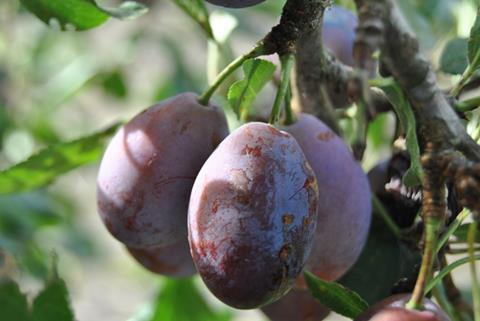Fresh and dried shipments expected to reach 100,000 tonnes this season, of which around 70 per cent will go to China

Chile anticipates a positive D’Agen plum export campaign this year, although shipments could be somewhat lower than last year.
“The weather conditions are all in place to have a good season, with good quality and very good condition. The key for us is that the rules are respected so that the harvest is favourable,” Ignacio Caballero, executive director of the Chilean Stonefruit Committee, told El Mercurio’s El Campo Magazine at the beginning of February.
“We hope there is no rain, that would be the only risk. Heatwaves will also play a role, so it is very important to harvest according to Chilean standards and quickly bring the fruit into cold storage to be able to extend the life of the product.”
In 2023/24, Chile exported 89mn (9kg) cartons of D’Agen plums. Demand has been growing steadily, leading to a significant increase in planted area. Chile currently has around 13,350ha of production, most of which are in the O’Higgins Region.
Total production of Chilean D’Agen plums (fresh and dried) is expected to reach 100,000 tonnes this season, of which around 70 per cent will be sent to China. The variety is typically sold dry, although in a few countries like China, they are imported fresh.
According to the Stonefruit Committee, 7.38mn cartons of plums had been shipped by the third week of 2025, around 8 per cent less than in the same period last year.
Cabellero said the drop in shipments is likely due to producers preferring to use their harvest for dehydrated products. “The advantage of European plums is that they have a very good price for both fresh and dehydrated products, so producers can make decisions week by week about whether they are going to export the product fresh or dehydrated, this depends on a commercial decision,” he explained.
Sebastián Valdés, director of Frutexa, said fresh prices were not so good last year, which could result in a smaller quantity of fresh fruit being exported this year.
“We are calm, until now everything that has been done has been done well. We have a high volume, last year it was very high, but the season was not very good. Being very realistic, we hope that this one will be better than the last one but we are cautious,” Caballero said.
Cultivation of D’Agen plums has become more technical in the country, with more high density planting and increasing mechanisation.
According to Caballero, Chile has a competitive advantage in plums as there is not much competition from other sources when its production hits the market. China is a big producer of D’Agen plums, growing around 370,000 tonnes a year, and this creates a good market for counterseasonal product.
“I think there is a market for good fruit. If China buys its 370,000 tonnes at good prices, it should perfectly be able to buy our 70,000 tonnes that we send fresh at a good price,” Valdés said.



